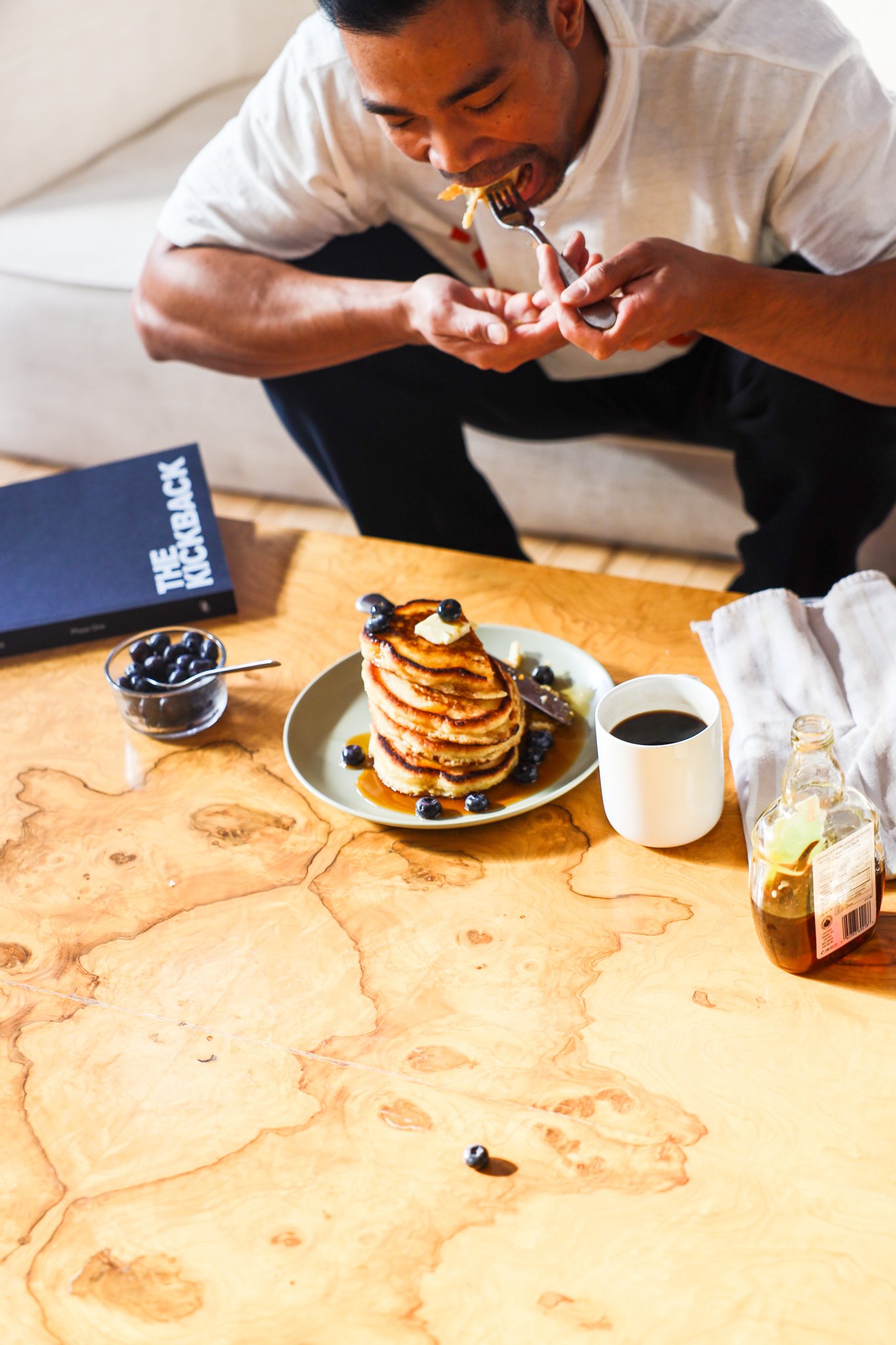Think of pancakes like champagne. If you let it sit for too long, the bubbles fall flat.
The same goes for pancake batter. It’s important not to let your batter sit for too long because the chemical reaction in pancakes creates carbon dioxide (just like champagne) and that’s where you get the bubbles from. Bubbles are a good thing — they equate to fluffy pancakes, and so the longer you let pancakes (or champagne) sit, the quicker the bubbles, or batter in this case, will deflate and result in lifeless pancakes.

Follow these steps and you’ll be rewarded with light, fluffy and delicious pancakes every time.
-
A non-stick pan is essential. Don’t even try it without one, you’ll just end up with a burnt pile of batter.
-
Your pan should be pre-heated. On medium-high before you drop the batter in. Depending on the type of stove you have you may need to tinker with the heat here to find what your medium-high is.
-
Use vegetable oil or any other neutral oil with a high smoke temperature. Avoid extra virgin olive oil, avocado oil, coconut oil, and butter as they have a lower smoke point and will burn your pancakes. You won’t want to be skimpy with the oil here, trust us. It’s important to use enough oil to completely cover the bottom of the pan (almost like a shallow pool for your pancakes to swim in). This step is one of the most important ones of all as it ensures crisp edges and fluffy interiors without burning your pancakes.
-
Wait for the pan to get hot but don’t let it smoke. You can test the heat level by hovering your hand above the pan. If it feels warm, you’re good to go. *Be careful not to touch it or put your hand directly on it so you don’t burn yourself.
-
Pour batter into the pan. We recommend using a ladle or 1/4 measuring cup here for consistency. The batter should lightly sizzle once it hits the oil.


-
Don’t crowd the pan. Depending on how big your pan is, and your preferred pancake size, you might be able to cook two pancakes at once. We’ll leave this up to you, but if your pancakes are touching, it’s not going to end well.
-
Be patient, Throw on one of our Spotify playlists and just enjoy until you see bubbles start to form (they’ll look as if they’re escaping) throughout the pancake. A couple of bubbles isn’t enough, you should see the majority of the pancake covered in them before it’s time to flip. *Making sure your pan isn’t too hot will allow enough time for this to happen.
-
Your pancake is ready to flip. Turn down the heat to medium if you haven’t already and gently turn over. Be extra careful here to not splatter yourself with hot oil here.
Pro tip: If you turn the pancake inward along the edge of the pan, it’s less likely the oil will splash.

-
Resist the urge to press down on the pancake! Pushing down on the pancake will interfere with the cooking process and result in a very flat pancake. Take your time, exercise patience and let the flipped side cook until the sides of the pancake are golden brown.
-
Remove from heat. To keep them warm while you cook the rest of the batter, keep them in the oven at 200 degrees°F or serve immediately.
-
Double-check your oil. To see that it’s still covering the bottom of your pan, if not add a little more before making the rest of your batch. If your pan is smoking, remove it from the burner altogether for a moment to give it a moment to cool.
-
Have fun & enjoy! Our pancakes were meant to act as blank canvases for your creativity. Make them your own by adding your favourite toppings and sauces — sweet or savoury.


